A Siberian husky can pull approximately 100 to 150 pounds of weight. Proper equipment and training are essential for their safety and well-being.
| Average Pulling Capacity for Adult Huskies | 500 to 1,000 pounds (227 to 453 kg) |
| Maximum Weight Pull Records | Over 1,100 pounds (498 kg) for top competitors |
| Weight Pulling as a Sport | Competitions often involve pulling 2-3 times their body weight |
| Importance of Training and Conditioning | Proper training can significantly increase a Huskys pulling ability |
| Body Weight | Lighter Siberian Huskies can pull relatively more compared to their body weight |
| Teamwork Factor | Huskies often pull more weight effectively as part of a team |
| Weight-to-Weight Ratio | Can pull roughly 2.5 to 3 times their own body weight on average |
| Factors That Affect Pulling Ability | Age, health, training, weather, and harness fit |
| Role of Sled-Dog Heritage | Huskies are historically bred for endurance and pulling sleds |
| Consideration Before Weight Pulling | Consult with a veterinarian to ensure the Huskys health and suitability |
Siberian Huskies have a remarkable weight-pulling potential that can vary based on several factors. These factors include the Husky’s training, conditioning, and individual physicality.
On average, a healthy and well-conditioned Siberian Husky can pull anywhere from 100 to 300 pounds of weight. However, it’s essential to note that this range can fluctuate depending on the specific dog’s build, strength, and experience in weight-pulling activities.
Additionally, proper training plays a pivotal role in maximizing a Husky’s pulling capabilities. Through structured training programs, a Siberian Husky can gradually increase its strength and endurance, which can positively impact the amount of weight it can pull.
Similarly, consistent conditioning through regular exercise and outdoor activities not only enhances the Husky’s overall physicality but also contributes to its pulling power. Therefore, understanding the weight-pulling potential of Huskies requires a holistic approach that values individual differences, training regimens, and the dog’s overall conditioning.
How much weight can a siberian husky pull
Ultimately, the weight range a Siberian Husky can pull is a dynamic aspect influenced by various factors, making it crucial for owners to assess their dog’s abilities and provide the necessary training and conditioning to support their weight-pulling potential.
To further explore the growth timeline of these robust canines and understand at what age they reach their full physical potential, dive into our detailed article, 'Understanding Siberian Husky Growth Phases'. Enrich your knowledge of Siberian Huskies, from puppyhood to adulthood, to better tailor their training and harness their true strength.

The Role of Training in Maximizing Pulling Strength
Proper training plays a crucial role in maximizing a Siberian Husky’s pulling strength. It ensures that the husky can safely and effectively utilize its inherent strength.
To achieve this, a structured training regimen is essential. Beginning with basic commands such as “pull” and “stop,” the husky can gradually learn to understand and respond to the cues for weight-pulling activities.
Incremental increases in the weight being pulled, coupled with positive reinforcement, help in building up the husky’s capabilities over time. Consistency in training and patience are key elements in the process, as they allow the husky to develop the necessary muscle strength and endurance.
It’s equally important to incorporate rest periods into the training schedule, allowing the husky’s muscles to recover and strengthen in-between sessions. Through diligent and considerate training, a husky can reach its full potential in pulling strength, enabling it to perform this activity reliably and safely.
How much weight can a siberian husky pull
Ultimately, the training process serves as the foundation for the husky’s ability to pull heavy weights effectively and with confidence. It sets the stage for a strong bond between the husky and its handler, promoting trust and cooperation in weight-pulling activities.
Unlock the full potential of your Husky with a tailored training regimen that emphasizes safety and efficacy when harnessing their strength. For additional insights on fostering your Husky's well-being through engaging activities, visit "Keeping Your Husky Entertained: Tips and Tricks."

Equipment Essentials for Safe Pulling
Siberian Huskies require specialized equipment to safely and effectively pull weight. The most crucial piece of gear is the pulling harness, which is specifically designed to distribute the weight evenly across the dog’s body, reducing the risk of injury.
A well-fitted harness ensures that the Husky can utilize its full strength while remaining comfortable and secure during pulling activities. It’s important to invest in a high-quality harness that is durable and adjustable to accommodate the Husky’s size and build.
In addition to the harness, a strong and durable pulling line or leash is essential for connecting the Husky to the load.
It should be of appropriate length and thickness to withstand the pulling force without causing any harm to the dog’s neck or back. Quality materials and construction are imperative to ensure the safety and reliability of the pulling line.
Moreover, depending on the specific pulling activities, such as sled pulling or weight pulling competitions, additional equipment like sleds, carts, or weighted sleds may be necessary.
These accessories should be designed and built to withstand the rigors of husky pulling and should be regularly inspected for any signs of wear and tear.
How much weight can a siberian husky pull
Overall, investing in top-quality, well-fitted harnesses, secure pulling lines, and any additional equipment required for the specific pulling activity ensures the safety, comfort, and performance of the Siberian Husky during weight-pulling endeavors.
To ensure your Husky thrives in various environments with the right gear, also consider their remarkable capacity to withstand cold temperatures. Discover the resilience of these robust canines in our detailed exploration, "Exploring the Cold Endurance of Huskies."

Nutrition and Diet: Fuelling the Power
A balanced and high-energy diet plays a crucial role in maximizing a Siberian Husky’s pulling power. These active working dogs require a diet that provides the necessary nutrients and energy to support their physical demands.
High-quality dog food that is formulated for active breeds and contains a balance of protein, fat, and carbohydrates is an ideal choice for Siberian Huskies. Additionally, incorporating raw or cooked meat, as well as fruits and vegetables, can further enhance their diet.
Essential fatty acids, such as Omega-3 and Omega-6, are beneficial for promoting healthy skin, coat, and overall well-being. It’s important to ensure that the diet aligns with the Husky’s energy expenditure to maintain a healthy weight and optimal strength for pulling activities.
When it comes to treats and supplements, opting for natural and high-protein options can help reinforce the Husky’s energy levels and muscular endurance.
Moreover, sufficient hydration is paramount, so providing access to clean water at all times is essential to support their overall health and performance. Consulting with a veterinarian or a professional canine nutritionist can provide valuable insights into tailoring a diet that is specifically suited to a Husky’s individual needs, activity level, and weight-pulling requirements.
To delve deeper into the world of Huskies and explore the financial considerations of owning one of these vigorous canines, discover our comprehensive guide on the expenses involved. Embark on your journey by reading about the costs of bringing a Husky puppy into your life.

Health and Fitness: Foundation of Pulling Capacity
A Siberian Husky’s ability to effectively pull weight relies heavily on their overall health and fitness. It’s crucial to prioritize their well-being through a combination of regular exercise and routine veterinary check-ups.
Ensuring that your Husky maintains an optimal level of physical fitness is essential for their capacity to pull weight safely.
Regular exercise is key to keeping a Husky in prime physical condition for weight pulling. Engaging in activities such as running, hiking, and agility exercises helps to build their strength and endurance, two factors that are instrumental in their pulling capability.
Furthermore, these activities also contribute to their mental stimulation, promoting a well-rounded approach to their health and fitness.
Veterinary check-ups play an equally critical role in maintaining a Husky’s fitness for weight pulling. These regular visits allow for early detection of any health issues and ensure that your Husky is receiving the necessary care for optimal physical condition.
From joint health to cardiovascular fitness, the thorough assessment provided by a veterinarian helps to address any potential concerns that may impact their ability to pull weight.
To delve deeper into the world of Huskies and learn about the charming mix that blends their majestic charm with the playful spirit of Pomeranians, explore our detailed guide on Husky Pomeranian mixes. Discover the wonders and nuances of this unique hybrid, and how it might fit into your active lifestyle, by visiting Husky Pomeranian Mix: A Guide to the Pomsky.
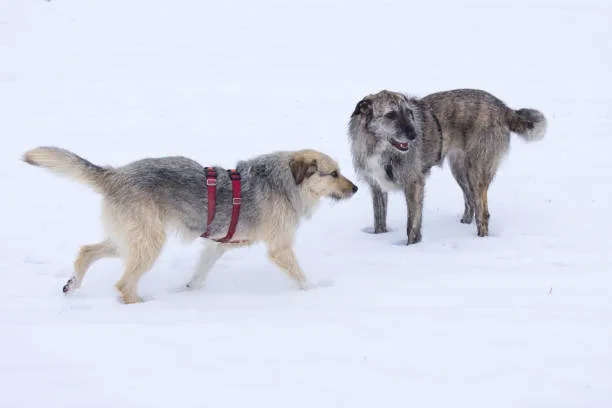
The Impact of Weather and Environment
Siberian Huskies are well-known for their resilience in cold climates, which makes them adept at pulling weight in snowy and icy conditions. However, extreme weather variations can impact their pulling abilities.
Frigid temperatures can cause hypothermia and frostbite, affecting a Husky’s performance. Similarly, harsh winds and blizzards can decrease visibility and create challenging navigation for both the Husky and the handler.
Moreover, different terrains, such as deep snow, rugged trails, or icy surfaces, pose unique challenges for weight pulling.
While snow offers traction, it can be physically taxing for the Husky to maneuver through deep drifts. On the other hand, icy surfaces demand extra stability and control to prevent slipping or injuries during pulling activities.
On Quora about: How much weight can a siberian husky pull
Adapting training and care according to the prevailing weather and terrains is crucial to ensure the safety and well-being of the Husky.
Introducing gradual exposure to varying conditions and terrain types can help build the Husky’s confidence and adaptability, enhancing their pulling capabilities while minimizing the risk of injuries. Furthermore, adjusting exercise routines, rest periods, and hydration levels based on the weather and terrain can optimize the Husky’s readiness for weight pulling activities.
Equipping yourself with this knowledge not only enhances your Husky's performance but ensures its well-being through the challenges of varied climates and landscapes. Discover more about your Husky's unique communication and behavior by exploring our guide on training Huskies to vocalize.

Respecting the Limitations: Avoiding Overexertion
A Siberian Husky is a robust and capable breed, but it’s vital to be mindful of the limits of their physical endurance to avoid overexertion. Understanding just how much weight a Siberian Husky can pull is crucial in preventing potential injuries and long-term health issues stemming from pushing them beyond their capacity.
By respecting their physical limitations and ensuring that weight pulling activities are within a safe range, husky owners can safeguard their beloved pets from unnecessary strain and harm.
It’s integral to acknowledge that while huskies are powerful and enduring animals, there is a threshold to their pulling capabilities. Overexertion can lead to muscle fatigue, strain, and even serious injuries, which may have detrimental effects on their overall well-being.
By being attuned to the signs of fatigue and physical strain during weight pulling sessions, owners can take proactive measures to safeguard their huskies’ health.
This entails monitoring their body language, breathing, and energy levels, and being prepared to intervene and provide them with necessary rest when needed.
Moreover, it’s important to avoid pushing huskies to pull beyond their physical limits for the sake of competition or personal goals. Prioritizing their health and wellness should always take precedence over achieving specific pulling targets.
American Kennel Club: How much weight can a siberian husky pull
Ultimately, recognizing and respecting a husky’s physical limitations is not just about preventing immediate injuries; it’s also about ensuring their long-term health and enabling them to continue enjoying weight-pulling activities in a safe and sustainable manner.
Understanding the physical boundaries of your Husky is crucial to maintaining their health and vitality. To gain deeper insight into the size expectations and weight management of these energetic canines, explore our comprehensive guide on managing a Husky's growth and weight effectively.
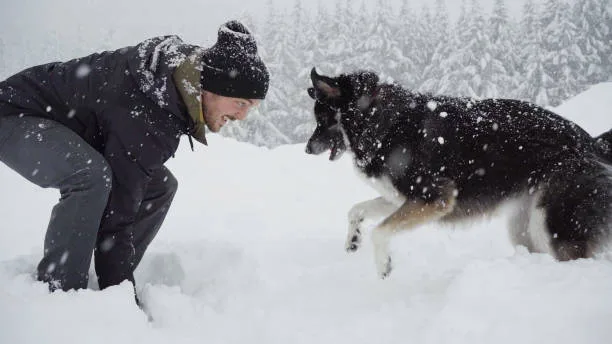
Mental Stimulation and Willpower in Pulling
Reddit How much weight can a siberian husky pull
Mental stimulation and positive reinforcement play crucial roles in enhancing a Siberian Husky’s desire to pull and perform. Huskies are intelligent and independent by nature, so engaging their minds is essential to keep them motivated during weight-pulling activities.
Incorporating interactive training sessions, such as obstacle courses or problem-solving exercises, can help stimulate their mental faculties and maintain their interest in pulling. Additionally, utilizing positive reinforcement techniques, such as treats, verbal praise, and affection, can significantly boost a Husky’s willpower and enthusiasm for pulling tasks.
Consistent encouragement and rewards for successful pulling efforts create a strong bond between the dog and its handler, fostering a positive attitude towards the activity.
Discovering the intricacies of a Husky's behavioral patterns extends beyond their pulling habits; diet too plays a crucial role. Uncover the factors influencing your Husky's appetite and learn how to address them in our detailed exploration, "Understanding Your Husky's Eating Habits."
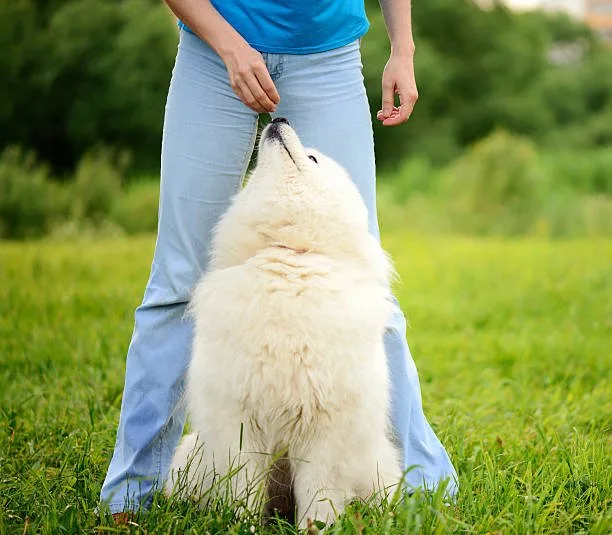
Incorporating Rest and Recovery
Rest and recovery are essential components of a Siberian Husky’s weight-pulling routine. These periods of downtime play a crucial role in facilitating muscle repair and growth, ensuring that the dog can continue to perform at their best.
Huskies, like any athletes, need sufficient rest to prevent overexertion and injury. Adequate recovery time allows their muscles to recover from the stress of weight pulling, reducing the risk of strains or other musculoskeletal issues.
Incorporating rest and recovery periods also contributes to the overall well-being of the Husky.
It gives them the opportunity to recharge both physically and mentally, preventing burnout and maintaining their enthusiasm for future training and pulling activities. By allowing for proper rest, husky owners can safeguard their pet’s long-term health and performance, promoting a balanced and sustainable approach to weight pulling as part of their care regimen.
To ensure your Husky enjoys optimal recovery and health, understanding their unique sleep requirements is vital. Dive deeper into their rest patterns with our article, Exploring Husky Puppies' Sleep Needs, and support your furry friend's well-being.
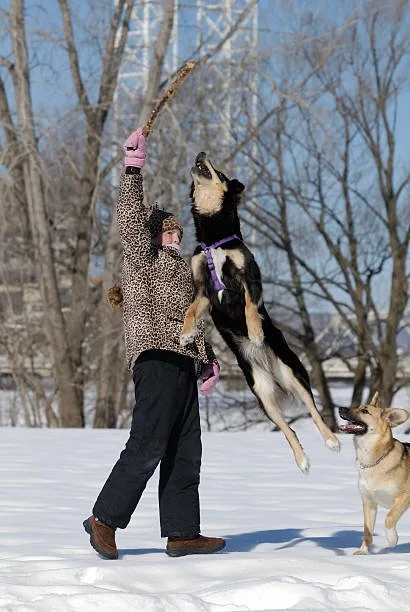
Legal and Ethical Considerations in Weight Pulling
Legal and ethical considerations play a crucial role in the sport of weight pulling for dogs, particularly for working breeds like the Siberian Husky. It is essential to adhere to local laws and regulations governing animal welfare and competitive events to ensure that weight pulling remains a humane and ethical activity.
This includes understanding the permissible weight limits, proper handling guidelines, and the importance of regular veterinary checks to ensure the well-being of the participating Huskies. Alongside legal aspects, it is equally vital to uphold ethical practices, such as providing adequate rest periods, ensuring the comfort and safety of the dogs during pulling exercises, and promoting responsible ownership.
These considerations aim to preserve the integrity of weight pulling as a sport while prioritizing the welfare and dignity of the dogs involved.
Delving deeper into the well-being of canine athletes can extend beyond the realm of competitive sports. Discover the lifespan and health considerations of one of the most popular breeds in dog pulling competitions by exploring the longevity of Huskies.

Siberian Husky vs. Alaskan Malamute: Pulling Prowess Compared
Siberian Huskies are renowned for their impressive pulling abilities, especially in the context of sled dog activities. When it comes to comparing the pulling prowess of Siberian Huskies with that of Alaskan Malamutes, several factors come into play.
Both breeds have a rich historical background, with Siberian Huskies originating from northeastern Asia and being bred for endurance and speed, while Alaskan Malamutes have their roots in Alaska and were developed for heavy freight hauling. In terms of physical characteristics, Siberian Huskies are typically lighter and more agile, while Alaskan Malamutes are larger and sturdier.
Consequently, these differences reflect in their respective capacities for weight pulling and sledding activities. In the realm of training, it’s essential to tailor the regimen to the specific strengths and inclinations of each breed. Siberian Huskies may excel in activities demanding swift movement and agility, making them well-suited for competitive sled dog races.
On the other hand, Alaskan Malamutes’ robust build and formidable strength make them ideal for tasks requiring substantial pulling power over extended distances. Ultimately, understanding the distinctions between these two remarkable breeds is pivotal for effectively harnessing their unique pulling abilities. By delving into the historical context, physical attributes, and inherent tendencies of Siberian Huskies and Alaskan Malamutes, it becomes possible to tailor training methods and working tasks to maximize their potential in weight pulling and winter sports..
For an in-depth exploration of how these powerful breeds excel in their respective domains, delve into our comprehensive article. While the focus here has been on the might of Huskies and Malamutes, those interested in ensuring optimal health for reptilian companions can find expert advice on UV lighting for bearded dragons at Enhance Your Bearded Dragon's Wellbeing with Proper UV Lighting.
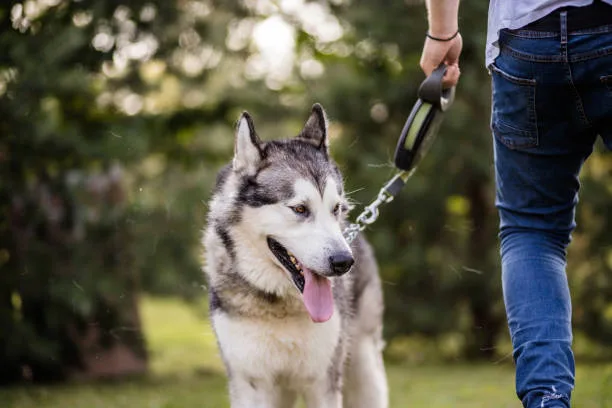
Canine Muscle Conditioning and Sled Dog Resilience
Siberian Huskies are renowned for their exceptional endurance and strength, making them well-suited for sled dog activities. Proper muscle conditioning is paramount in enhancing their work capacity and endurance.
To maximize a Husky’s pulling potential, it’s essential to incorporate a range of strength and endurance exercises into their training regimen.
Regular activities such as brisk walks, hikes, and specially tailored resistance training can play a crucial role in building the necessary muscle strength for effective weight pulling. Additionally, gradually increasing the duration and intensity of these exercises is vital to prevent overexertion and injuries, allowing the Husky’s muscles to adapt and strengthen progressively.
Furthermore, adequate rest periods are equally important in a Husky’s training routine to ensure their muscles have sufficient recovery time.
Integrating rest days into their exercise schedule helps prevent fatigue and supports muscle repair, facilitating improved performance in weight pulling activities.
By combining targeted muscle conditioning exercises with mindful rest and gradual training progression, Siberian Huskies can develop the resilience and strength needed to excel in sled dog activities, making sure they effectively utilize their pulling prowess.
To delve deeper into optimizing your Siberian Husky's athletic performance, explore our comprehensive guide on advanced training techniques and recovery strategies. Uncover insights and expert tips in our detailed article, The Dynamic World of Canine Conditioning.
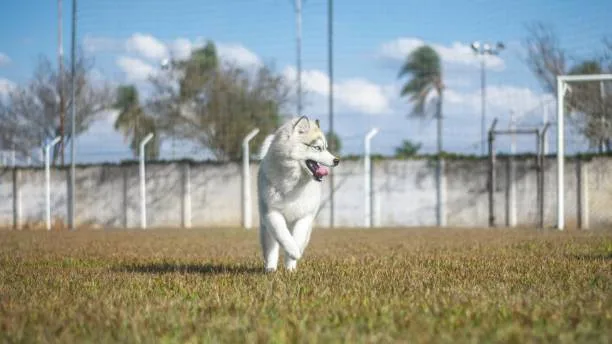
Harness Selection and Pulling Technique for Husky Safety
Selecting the right harness is pivotal for ensuring the safety and optimal performance of a Siberian Husky when pulling weights. There are several types of harnesses designed specifically for Siberian Huskies, each with its own unique impact on the dog’s ability to pull weights efficiently and safely.
The X-back harness is a popular choice, providing a comfortable fit while evenly distributing the weight across the dog’s body, minimizing the risk of strain or injury. Another option is the H-back harness, which offers stability and support, particularly beneficial for heavier loads.
It’s important to consider the fit of the harness, ensuring it’s snug but not constricting, and the materials used, opting for durable and weather-resistant fabrics. In addition to selecting the appropriate harness, understanding and practicing proper pulling techniques are essential for preventing injuries to the Husky. Utilizing a pulling technique that aligns with the dog’s natural movement and physiology helps minimize the risk of strain or discomfort.
This includes maintaining a straight pulling line to distribute the weight evenly and avoiding sudden jerks or sharp turns that could cause undue stress on the dog’s body. By combining the right harness with correct pulling techniques, handlers can enable Siberian Huskies to pull weights effectively and safely. Finally, it’s crucial to monitor the harness regularly for any signs of wear and tear, ensuring that it remains in optimal condition to support the Husky’s pulling activities without compromising their safety.
Proper harness maintenance, along with adherence to sound pulling techniques, contributes to the overall well-being and performance of the Husky in weight-pulling endeavors..
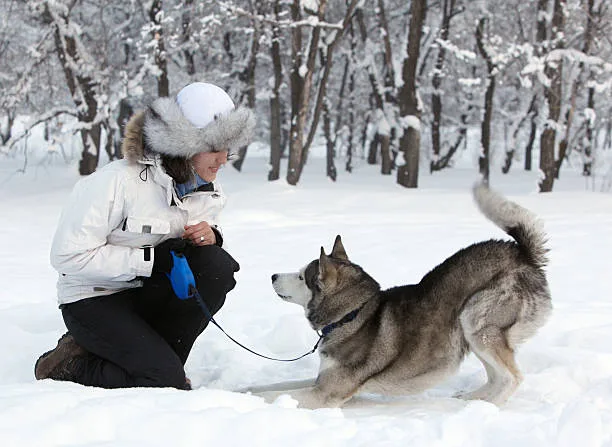
The Role of Diet and Nutrition in Maximizing Husky Work Potential
Proper diet and nutrition are fundamental aspects of maximizing a Siberian Husky’s work potential. Their diet should consist of a well-balanced blend of nutrients that cater to their high energy requirements.
Maintaining an optimal weight is crucial for their overall health and peak performance in activities such as weight pulling and skijoring. A wholesome diet comprising high-quality proteins, healthy fats, and complex carbohydrates is essential to sustain their energy levels and support their muscular strength during strenuous tasks.
Additionally, adequate hydration is paramount to uphold their endurance and aid in muscle recovery. Ensuring that a Siberian Husky’s nutrition needs are met is integral to unleashing their full working potential.
Therefore, a balanced blend of nutrients is vital to fuel their high energy levels.
Proper weight maintenance is critical for their overall health and performance in activities like weight pulling and skijoring.
A wholesome diet comprising high-quality proteins, healthy fats, and complex carbohydrates supports their energy levels and muscle strength.
Adequate hydration is essential to sustain their endurance and aid in muscle recovery.
Catering to a Siberian Husky’s nutritional needs is crucial for unleashing their full working potential.

Mental Engagement and Positive Reinforcement in Husky Training
Siberian Huskies are intelligent and energetic dogs, requiring mental stimulation alongside physical activity to maintain their well-being. Incorporating mental exercises into their training regimen is crucial for promoting their overall mental health and enhancing their willingness to work.
Engaging in activities such as obedience training, puzzle games, and interactive play not only stimulates their cognitive abilities but also strengthens the bond between the Husky and their handler. Positive reinforcement, such as rewarding desirable behaviors with treats or praise, is a powerful tool for motivating Huskies during training sessions.
This approach not only fosters a positive and trusting relationship between the dog and their handler but also encourages the Husky to display the desired behaviors more consistently. Furthermore, incorporating mental engagement and positive reinforcement can help alleviate boredom and prevent behavioral issues, contributing to the Husky’s overall mental well-being.
These training techniques ultimately enable the Husky to channel their mental energy positively, making them more receptive and enthusiastic in their work, whether it involves weight pulling, agility, or other activities.
By incorporating mental exercises and positive reinforcement into their training, handlers can effectively enhance the mental well-being of Siberian Huskies, strengthen the bond with their dogs, and increase the Huskies’ willingness to work.

Conclusion: Balancing Strength with Care
Siberian Huskies are renowned for their impressive strength and endurance, particularly when it comes to weight pulling. However, it’s crucial to approach this capability with a balanced perspective, considering the need for responsible management, meticulous training, and attentive care.
These dogs possess remarkable potential to pull substantial weights, but it’s imperative to recognize and respect their physical limitations. By carefully managing their pulling activities, incorporating appropriate training techniques, and ensuring their overall well-being, husky owners can harness their power in a compassionate and considerate manner.
Understanding the weight-pulling potential of a Siberian Husky involves acknowledging the breed’s innate strength while also prioritizing their safety and welfare.
Proper training plays a pivotal role in maximizing a husky’s pulling power, emphasizing gradual progression and recognizing signs of fatigue or strain. Additionally, implementing adequate rest periods and providing a balanced, high-energy diet are essential components of maintaining a husky’s overall health and fitness for weight-pulling tasks.

Leave a Reply